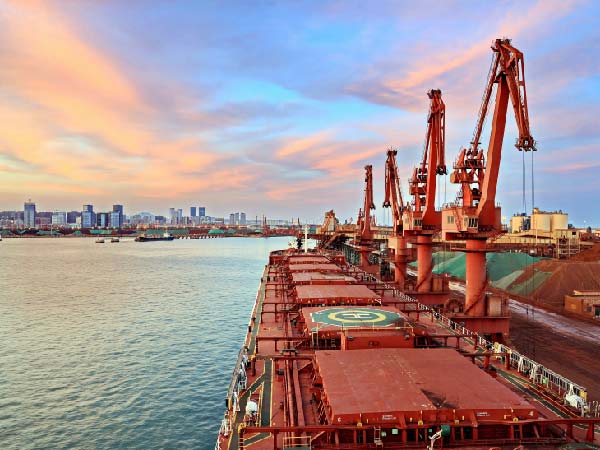There are several factors in commodity markets currently making credit risk a pressing concern across supply chains and trade finance providers. For example, high energy prices not only drove 31 UK suppliers out of business last year but have helped drive inflation of all goods and services, particularly via the cost of fertilisers. These factors have resulted in higher agricultural prices, further exacerbated by the disruption to Ukrainian and Russian agriculture and exports caused by the invasion.
High and volatile prices are leading to an increased possibility of government interventions, such as a recent palm oil export ban in Indonesia, further disrupting markets. And with consumers facing rising costs for food and energy essentials, discretionary spending is reduced, potentially meaning lower demand for luxury commodities, as well as the risk of recession.
Liquidity risk has also grown as prices are both volatile and higher resulting in margin calls. This also impacts on credit risk as a lack of liquidity makes it harder to find new counterparties if a buyer/supplier is unable to fulfil their obligations. And the volatility means that default risk is even more pronounced, as shipment values can change significantly in the spot market between the shipment allocation and a default occurring.
And for highly leveraged commodity traders, credit risk does not only mean assessing the risk of non-payment for your own goods; it’s important to remember that you are also a credit risk to your bank or finance provider. When markets are tight, smaller traders in particular struggle to access trade finance, as providers look to what they perceive as safer investments. And the sudden inflationary pressure we have experienced means more credit is needed for each transaction, increasing the risk to trade finance providers and therefore the difficulty of securing credit.
Taking an operational approach to credit risk
Of course, credit risk has always been on the risk management agenda, and your organisation likely already has processes and systems in place to manage it. But these processes are not always perfectly embedded in day-to-day operations, and that leaves the business exposed to unnecessary risk.
As commodity management technology providers, Gen10 are experts in helping our clients create more effective operations. The below suggestions are all based around using your CTRM and other commodity management systems more effectively, but if they are not practical with your existing systems, get in touch with us to discuss your other options.
Contract management
Contract management is one of the areas your organisation has most control over when it comes to credit risk. Ensuring contracts are iron-clad and provide as much protection against default as possible is an important starting point. Contract management may be a feature of your commodity management system, or a contract management app can be added on to it.
A good contract manager reduces both risk and the burden on legal teams by using standard clauses, pre-approved templates, and automated approval processes to ensure your contract terms are correct, whilst supporting traders to make better deals, faster.
It should also allow your teams to create greater contract optionality. Traders should be able to add pricing based on different variables, such as creating a premium for different delivery locations on top of the usual product attributes, to contracts and their automated pricing calculations. And operators should be able to allocate stock to contracts in the most effective and profitable way, with all the information and optionality to reassess as the situation changes.
Treat each counterparty individually
One of the basic features of a good commodity management system is an integration with your ERP or accounting software, so that your traders can see accurate real-time credit line usage. Traders should be able to access real-time credit limits and trade limits to ensure their contracts will be within tolerance.
But there are other benefits too. When assessing counterparties, you may use third-party credit ratings, but either way the counterparty’s past interactions with your business can provide a useful tool in creating your own internal credit ratings. You could, for example, consider their payment history and days payable outstanding, as well as their location and other external factors, given the geographical risks above.
Commodity management systems should also include a CRM where individuals across your organisation can access this key information, as well as documents and certifications. You should also be able to add expiry dates and reminders to documents, or use them to schedule regular counterparty reviews, as you can with Gen10’s CommOS.
But pay attention to the bigger picture
It’s also important to pay attention to broader risks that would increase the damage to your organisation if a buyer failed to pay, and have the analytical tools and reports to share this information across the organisation.
Concentration risk is an obvious starting point, but FX and country risks could also increase the risk of non-payment and the damage from it. The only way to mitigate these risks is through data. Your commodity management system should allow your risk team to access the data they need in real-time in the format they need it.
The system needs to include information such as currencies, exchange rates and counterparty locations, and it is not enough for it be a record of past actions that traders fill in after the fact. A good commodity management system allows traders and operators to manage their work, and updates risk teams with the actual situation as it evolves.
And it is important to manage logistics information alongside this other data. Whilst it may not have the same impact on credit risk, vessels at sea and the location of warehoused stock can certainly influence the overall level of risk and should influence decision-making. And different managers within the business should have visibility into and an understanding of your portfolio in one place, whether they manage an office or brand, up to the group level, depending on roles and needs.
Integrate trade finance processes
All the operational controls above can also be used to accelerate trade finance. Automated document creation and workflows can be used to accelerate internal processes and complete transactions faster, as well as providing more efficient communication with banks. It also facilitates audits by trade finance providers, helping to protect the lines of credit you have in place.
And at times when new finance arrangements are harder to access due to providers looking for safer investment channels, managing your credit risk can show your organisation to be more credit worthy. With the right processes to protect your business and a system that allows you to securely share relevant information with external partners, you can show how you are managing risks to protect both your own organisation and trade finance partners’ investments.
There are many other ways commodity management systems can help commodity businesses manage risk and improve their trade finance processes. If you’d like to discuss how your organisation could do so, or there are areas discussed today that your CTRM doesn’t currently support, get in touch with us now to talk about how commodity management technology could be the answer.



